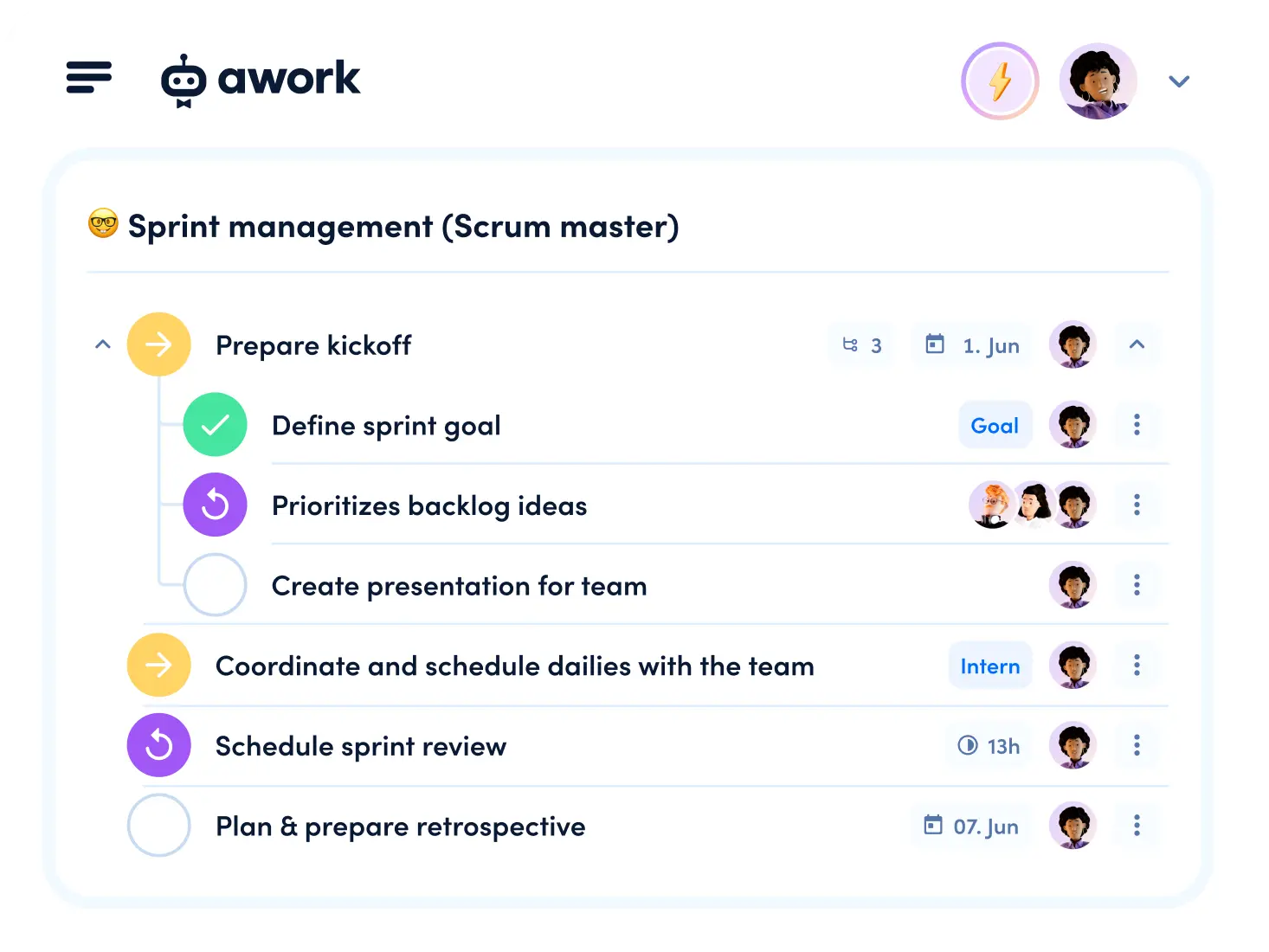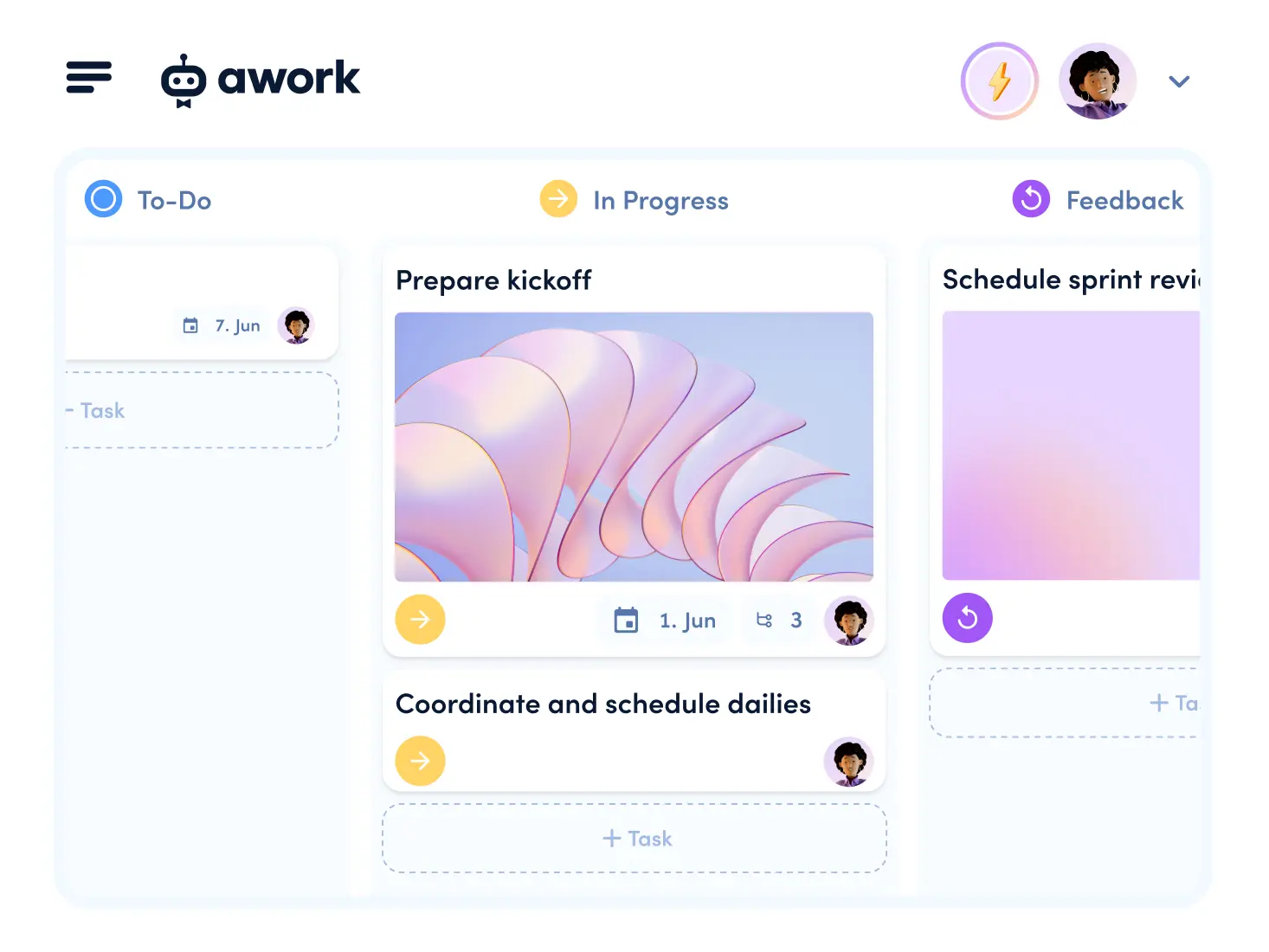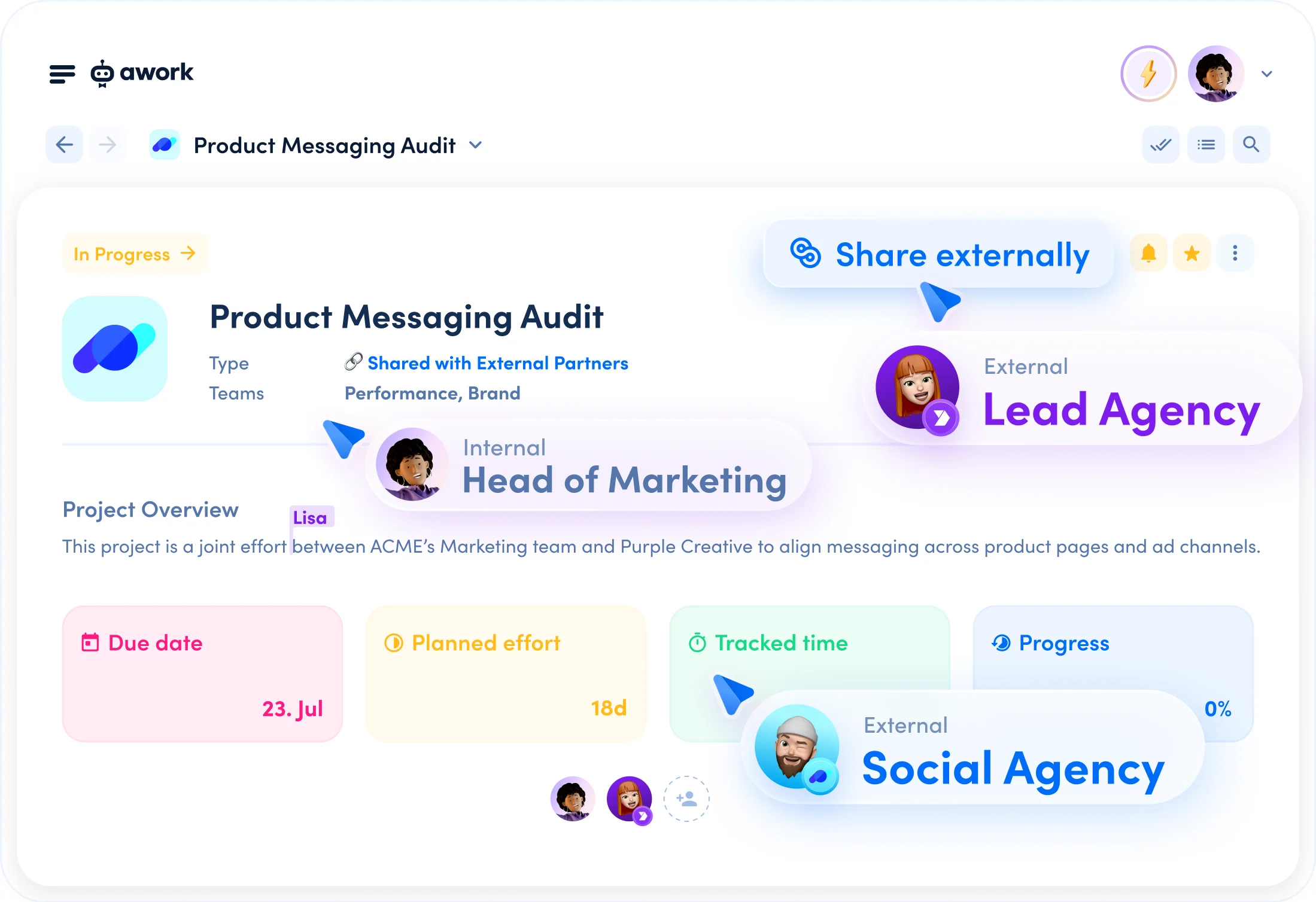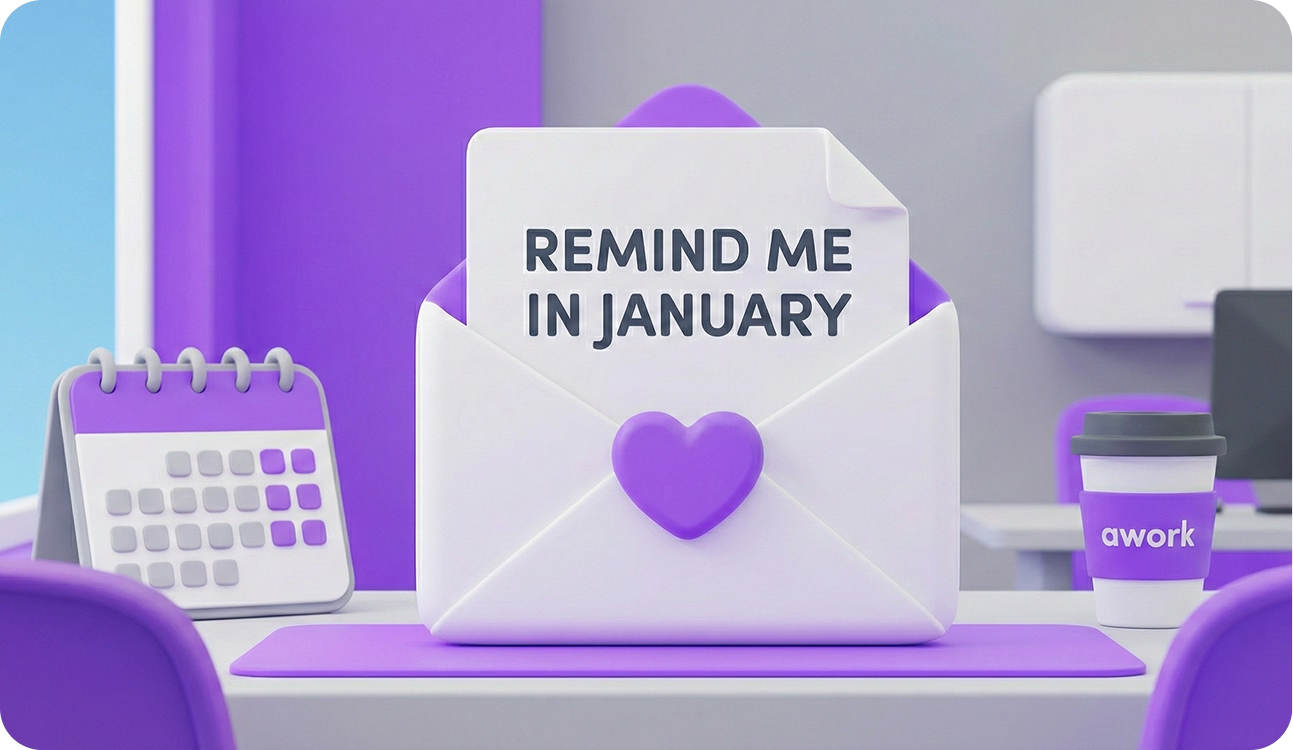




Scrum divides projects into fixed time periods, known as sprints. In each sprint, the team works on defined tasks that are planned jointly and reviewed regularly.
Typical elements:
Ideal for:
Agencies that manage complex projects, e.g. website relaunches, campaigns or technical implementations.
Advantage:
Scrum creates focus, measurable progress and regular improvements with full transparency for the team and customers.
Kanban visualises tasks on a board – from ‘To Do’ to ‘In Progress’ to ‘Done’. The team works continuously, without fixed time constraints. The focus is on flow, clarity and efficiency.
Typical elements:
Ideal for:
Teams with ongoing tasks – e.g. content, social media, support or smaller customer enquiries.
Advantage:
Kanban creates an overview, reduces waiting times and helps teams to work in a focused manner – without rigid sprint structures.
Many agencies combine Scrum and Kanban to reconcile long-term project work with day-to-day business.
How it works:
Ideal for:
Agencies with multiple parallel projects, changing customer requirements and cross-functional teams
Advantage:
You benefit from the structure of sprints – and the flexibility of the Kanban board.










































Scrum and Kanban are both agile methods – but with different approaches:
In short:
Scrum provides structure through time – Kanban through flow. Both methods help to work in a more focused and transparent way, in different ways.
Yes, and many teams do just that. The combination is often referred to as ‘Scrumban’ or a hybrid approach. For example, Scrum is used for project-based work (with sprints, reviews and clear goals) and Kanban for spontaneous tasks, support or day-to-day business.
This works particularly well in agencies, where larger projects and smaller customer enquiries are worked on in parallel. It is important that both working methods are clearly separated or consciously interlinked, for example, via a shared board with different columns or work streams.
Not necessarily, but highly recommended once a certain level of complexity is reached. As soon as several people, projects or tasks are running simultaneously, paper boards, whiteboards or Excel lists quickly reach their limits.
A good tool helps you to:
Especially in distributed or hybrid teams, a digital Scrum or Kanban board is almost indispensable for making collaboration transparent and efficient.
Getting started doesn't have to be big or complicated. Many teams start with small steps:
It is important that you get your team on board and explain why you want to work in an agile way – e.g. to react faster, collaborate better or manage projects more transparently. Many tools offer simple templates that you can use to get started right away – without any prior knowledge or training.
Yes, absolutely. Small teams in particular benefit from the principles of agile working: short feedback cycles, clear priorities, better self-organisation. You don't have to strictly follow all Scrum rules to do this.
Even a simple Kanban board or a shared sprint plan can help you maintain an overview and work in a more focused manner – even with just a few people. Agility does not mean more meetings. It means working together more effectively.

I've been a project manager for over 14 years, and it feels like I've been searching for a proper digital solution for just as long. We now found that solution with awork.

The efficient workflows and project-related communications facilitated by awork are undoubtedly the best.

My team is truly excited about awork. We've tested other tools and were not as happy, but now we’ve found genuine relief and support for everyone.

We chose awork because it offers a wealth of features, outshining all the free project management tools while remaining highly flexible. Additionally, it was important to us that our tool of choice receives regular updates.

awork is incredibly intuitive to use. Everyone gets the hang of it right away and enjoys working with it.

Just had a chat with @awork’s support. That’s what I call customer-oriented work – very, very good. And the tool is just as capable!


Try it for free – no credit card required.
We get it – December's chaos. Drop your email and we'll remind you to try awork in January and get your team's projects under control. For an organised start to 2025.


